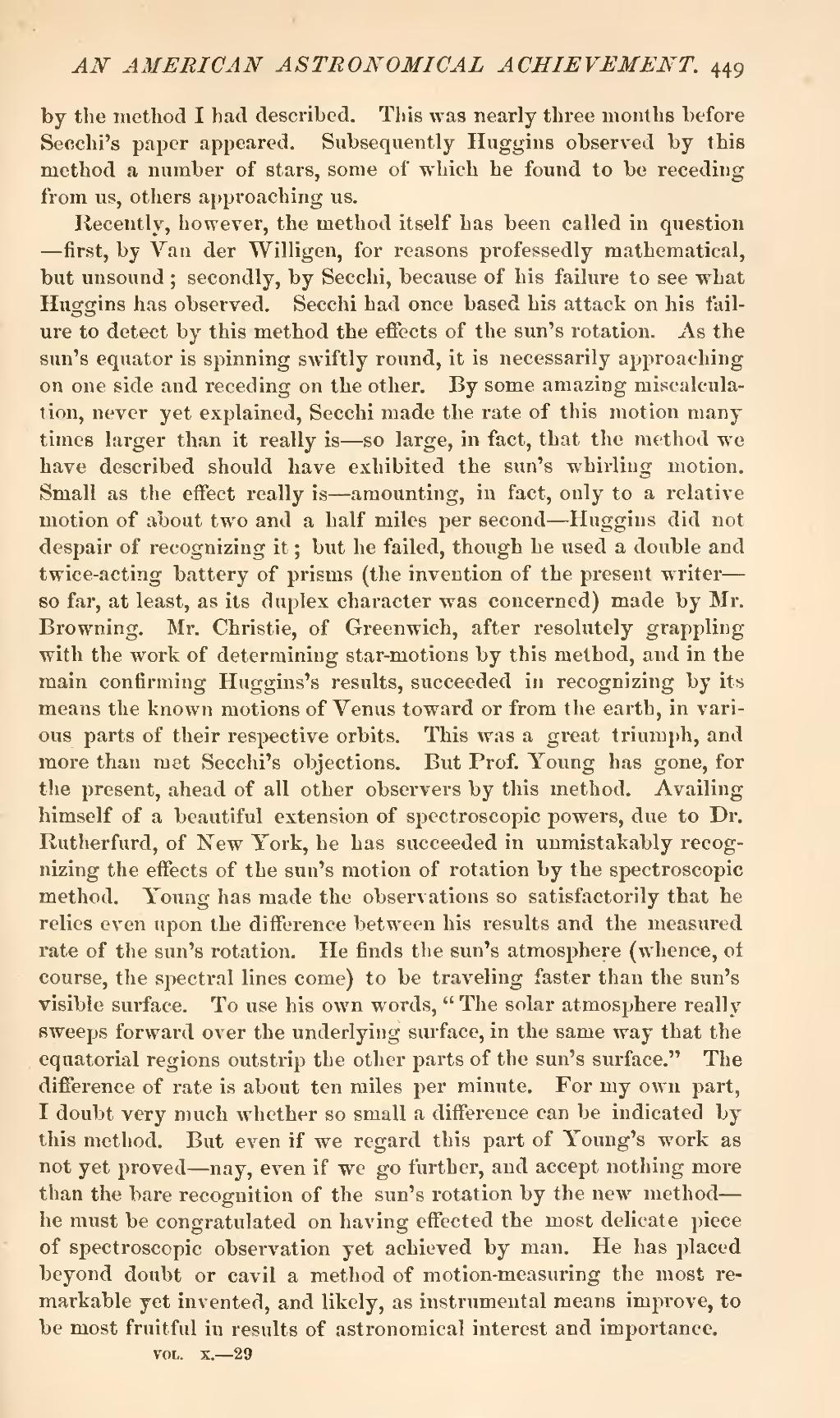by the method I had described. This was nearly three months before Secchi's paper appeared. Subsequently Huggins observed by this method a number of stars, some of which he found to be receding from us, others approaching us.
Recently, however, the method itself has been called in question—first, by Van der Willigen, for reasons professedly mathematical, but unsound; secondly, by Secchi, because of his failure to see what Huggins has observed. Secchi had once based his attack on his failure to detect by this method the effects of the sun's rotation. As the sun's equator is spinning swiftly round, it is necessarily approaching on one side and receding on the other. By some amazing miscalculation, never yet explained, Secchi made the rate of this motion many times larger than it really is—so large, in fact, that the method we have described should have exhibited the sun's whirling motion. Small as the effect really is—amounting, in fact, only to a relative motion of about two and a half miles per second—Huggins did not despair of recognizing it; but he failed, though he used a double and twice-acting battery of prisms (the invention of the present writer—so far, at least, as its duplex character was concerned) made by Mr. Browning. Mr. Christie, of Greenwich, after resolutely grappling with the work of determining star-motions by this method, and in the main confirming Huggins's results, succeeded in recognizing by its means the known motions of Venus toward or from the earth, in various parts of their respective orbits. This was a great triumph, and more than met Secchi's objections. But Prof. Young has gone, for the present, ahead of all other observers by this method. Availing himself of a beautiful extension of spectroscopic powers, due to Dr. Rutherfurd, of New York, he has succeeded in unmistakably recognizing the effects of the sun's motion of rotation by the spectroscopic method. Young has made the observations so satisfactorily that he relies even upon the difference between his results and the measured rate of the sun's rotation. He finds the sun's atmosphere (whence, of course, the spectral lines come) to be traveling faster than the sun's visible surface. To use his own words, "The solar atmosphere really sweeps forward over the underlying surface, in the same way that the equatorial regions outstrip the other parts of the sun's surface." The difference of rate is about ten miles per minute. For my own part, I doubt very much whether so small a difference can be indicated by this method. But even if we regard this part of Young's work as not yet proved—nay, even if we go further, and accept nothing more than the bare recognition of the sun's rotation by the new method—he must be congratulated on having effected the most delicate piece of spectroscopic observation yet achieved by man. He has placed beyond doubt or cavil a method of motion-measuring the most remarkable yet invented, and likely, as instrumental means improve, to be most fruitful in results of astronomical interest and importance.
